Before doing this experiment, if you had asked me which mix to buy for starting vegetable seeds I would have recommended the most expensive you could find. You generally get what you pay for with potting and seed-starting mixes, was my view.
My view has changed.
The design of the experiment
On March 1, I sowed these vegetable seeds: tomato (Mountain Fresh Plus and Big Beef), cauliflower (Flame Star), broccoli (Imperial), lettuce (Magenta and Coastal Star), cabbage (Tendersweet and Storage No.4), cucumber (Summer Dance), zucchini (Desert), and kale (Winterbor).
I sowed them in these four mixes: Edna’s Best (by E.B. Stone), Recipe 420 (by E.B. Stone), Ocean Forest (by Fox Farms), and my homemade compost.
While my compost was “free,” the others cost as follows: Edna’s Best, $9; Recipe 420, $17; Ocean Forest, $20. Each bag was 1.5 cubic feet and bought at my local nursery.
I sowed the same number of seeds in each mix, and I attempted to care for the seeds in each mix to the best of my ability.
The aim of the experiment
The overarching question that I hoped the experiment would answer was whether more expensive mixes grew better seedlings. In other words, were they worth the extra money?
Here they grow
Here is how the seedlings germinated and grew. In each photo, the location of the mixes is the same.
After taking this photo on March 14 I thinned seedlings in the lower right mix because they were large and crowded.
On March 21 I declared the experiment over since some of the plants in some of the mixes were big enough to need transplanting. The results were also clear to me at this point.
Before I tell you which mix is which, would you like to guess?
The answer is: top left, Recipe 420; top right, Edna’s Best; bottom left, Ocean Forest; bottom right, my compost.
How would you rank their performances based on the photos?
To me, there appeared two levels, with two mixes in each level. The level of better performers included Recipe 420 and my compost whereas the level of worse performers included Edna’s Best and Ocean Forest.
Ingredients and impressions
Why? It would be helpful to suss out why the mixes performed the way they did. Let’s look at ingredients first.
I see only slight differences in the listed ingredients, but the actual products don’t look as similar.
Edna’s Best reminds me a bit of a municipal greenwaste compost that has been cooked at high temperatures. I found that such a mix (Miramar Greenery compost) did not work well in a previous experiment. (See my post, “Experiment: Comparing composts for vegetable seed starting.”)
Recipe 420 appears to have a slightly larger array of constituents compared to the others.
Ocean Forest looks like it is made of mostly peat moss and perlite. I can also tell you that it feels extremely lightweight when you hold it.
My compost? It’s just made of food scraps from our kitchen, garden scraps, wood chips, chicken manure, and a bit of dirt. It’s just stuff from our kitchen and yard, thrown into our chicken pen and scratched together and pooped on by the chickens over the course of a handful of months.
In the end, I don’t feel I can grasp good reasons for the disparity in performances between the mixes. But some previously sown tomatoes might give more of a clue.
The tale of the tomatoes
Back in January, before doing the above vegetable seed experiment, I sowed a few trays of tomato seeds in Recipe 420 and Ocean Forest. Here were the two sets of plants after about a month since sowing.
I hadn’t sown these tomatoes as an experiment. I didn’t sow the same exact varieties in each mix, for example. It nevertheless became clear that all the tomatoes growing in Ocean Forest were struggling. They looked like they were either missing a nutrient (deficiency) or had too much of a nutrient (toxicity). They were purple and yellow and stunted compared to the vibrant green of the tomato plants grown in Recipe 420.
On March 21, I decided to try to rescue some of the plants growing in Ocean Forest by transplanting them into bigger containers that I filled with Recipe 420 rather than more Ocean Forest. Here they were on the day of potting up.
Would the Recipe 420 mix somehow rejuvenate the plants?
Here they are this morning, 11 days later, on April 1:
Take aways
Recipe 420 is a good mix, folks. It’s the one I will buy if I’m running low of my own compost. It’s also the one I will recommend to others, as I feel it has proven itself.
In my previous experiment with it (“Comparing my compost and Recipe 420 for starting vegetable seeds”), I found that it worked better than my compost and I guessed that the results were partly due to my packing down the compost in the cells. It seems that may have been correct, as I didn’t pack the compost into the cells in today’s experiment and my compost worked just as well as Recipe 420.
But my main take-away from this experiment is that no, you don’t always get what you pay for with potting soil and seed-starting mixes. The cheapest mix (Edna’s Best) and the most expensive mix (Ocean Forest) achieved equal results, both of which were inferior to the nearly most expensive mix (Recipe 420) and my homemade compost.
Finally, I feel bad about the results of Fox Farm’s Ocean Forest mix. I don’t mean to badmouth Ocean Forest (or Edna’s Best), a product that I imagine some good people have put their hearts and sweat into making. I’m open to the possibility that my experiment design was flawed or that I just got a bad batch of Ocean Forest. But until someone shows me so, there are my conclusions.
I publish this post in order to share with you the experiences I’ve had so that you can spend your money wisely and grow better vegetables.
A couple related posts
“Can you start vegetable seeds in compost?”
“Starting vegetable seeds: six keys to success”
All of my Yard Posts are listed HERE


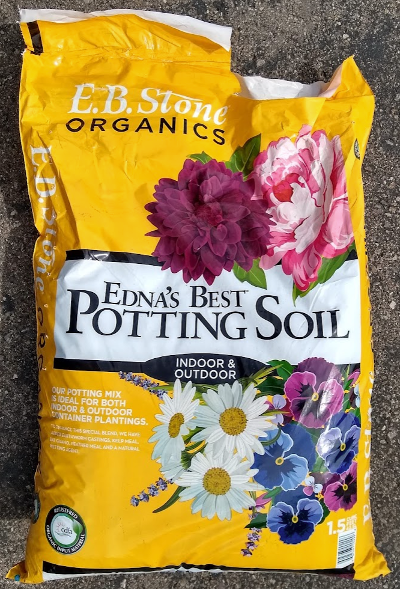
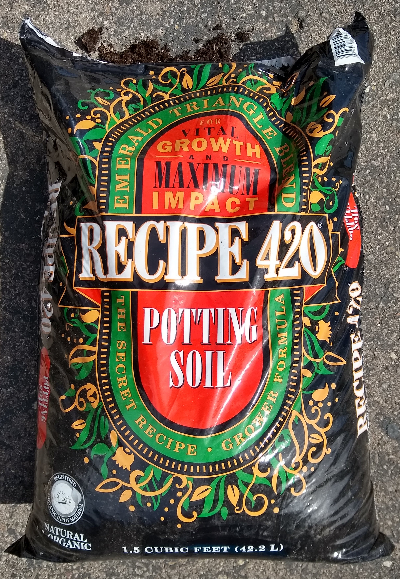
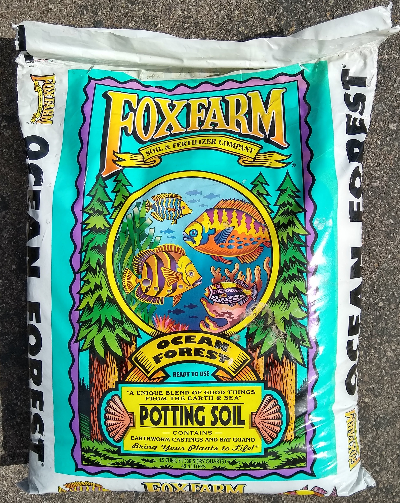

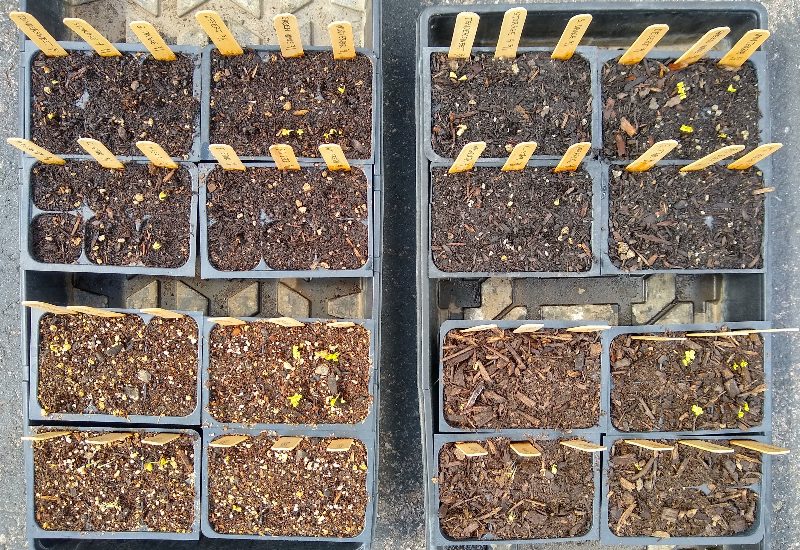
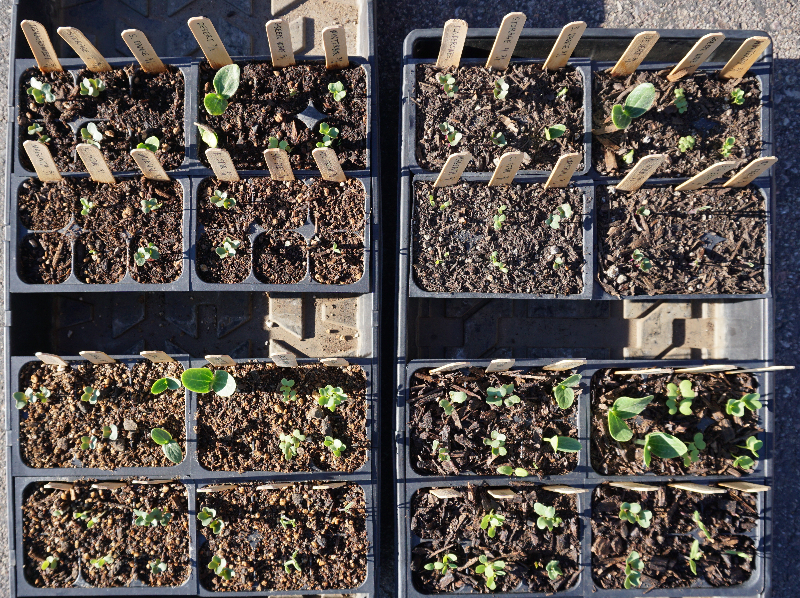
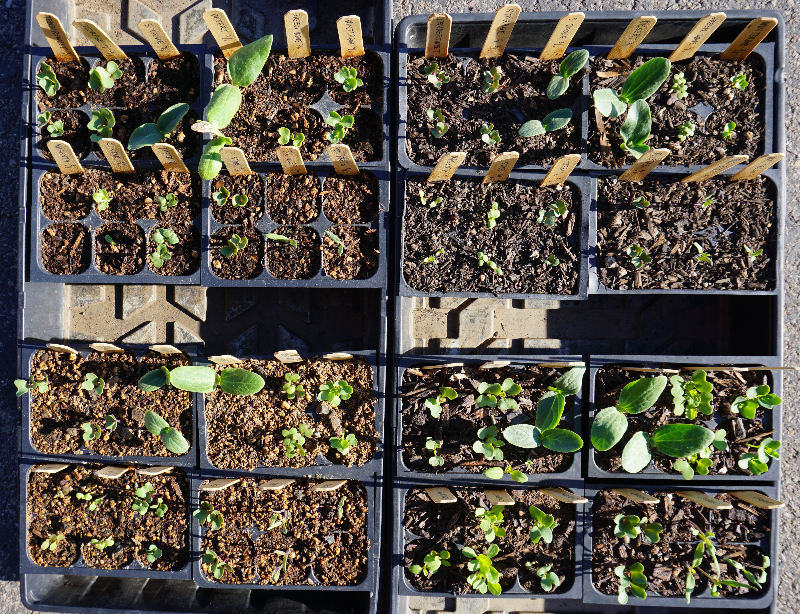

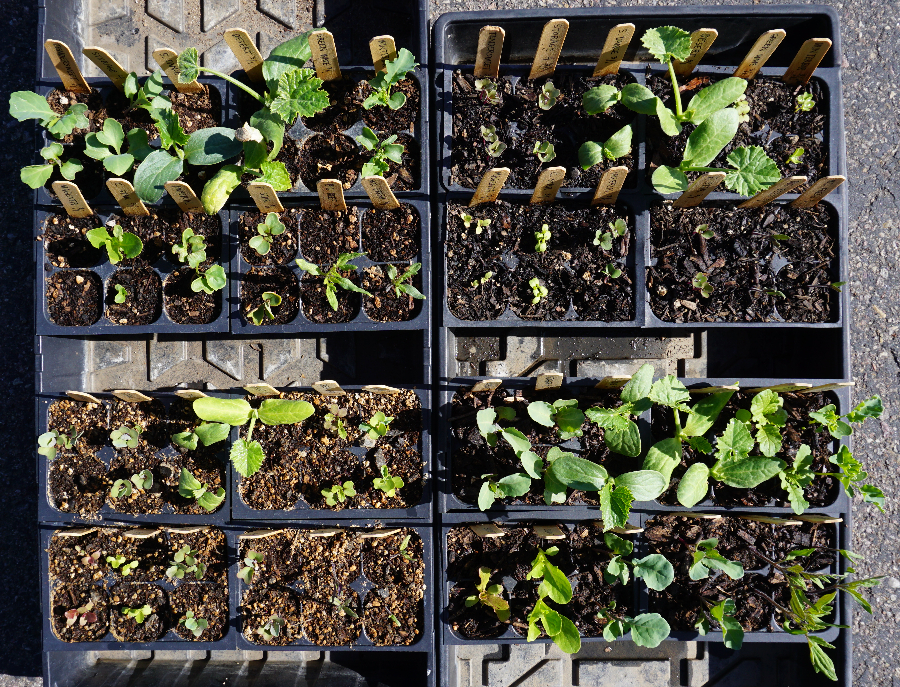
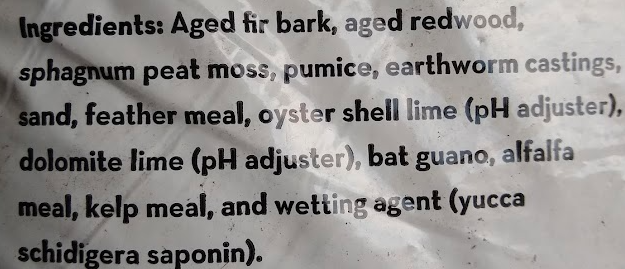

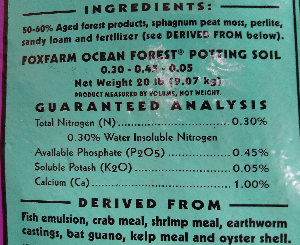
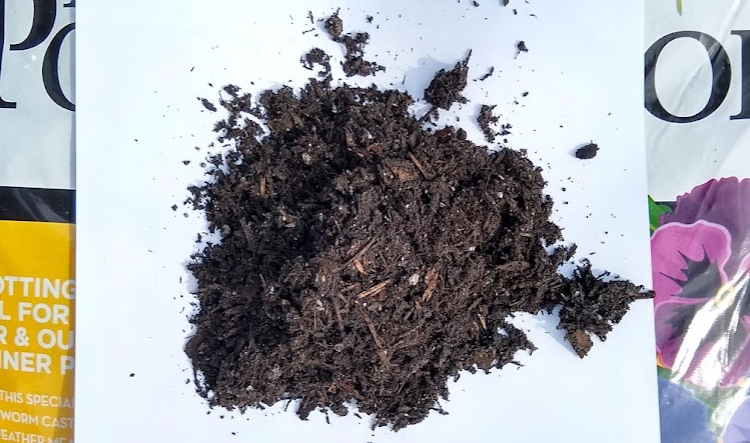
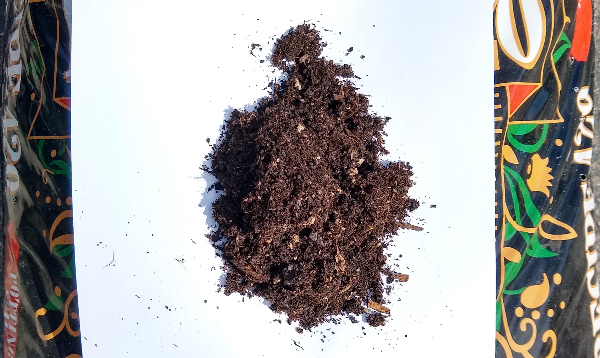
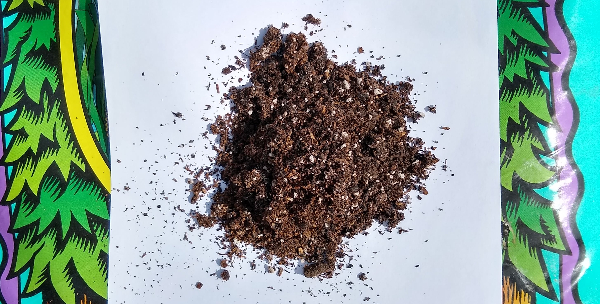
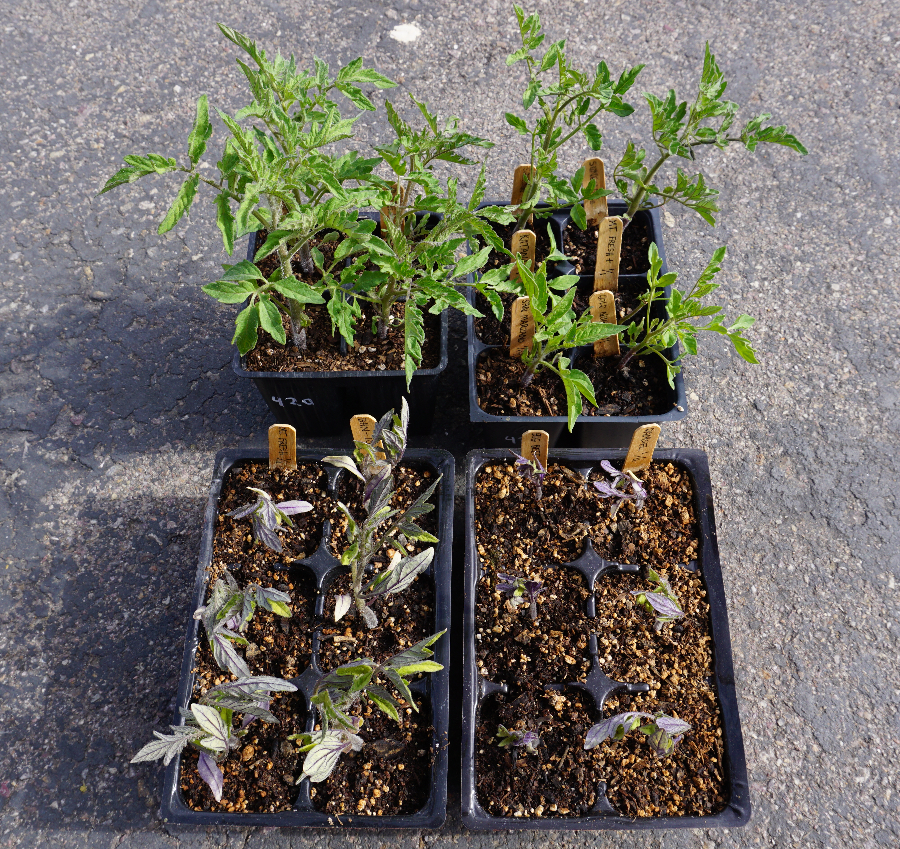
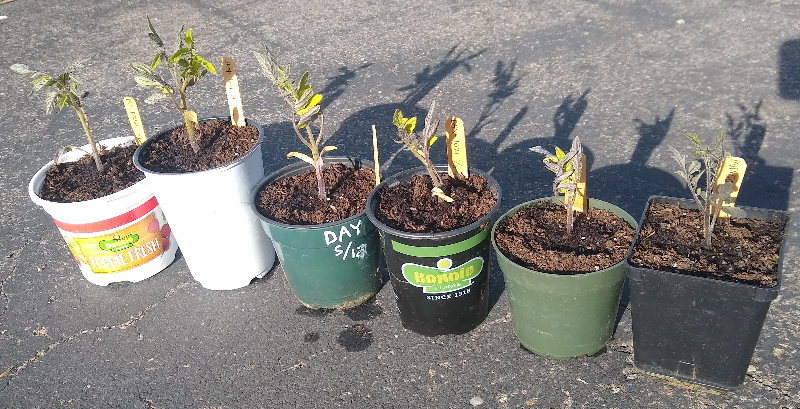
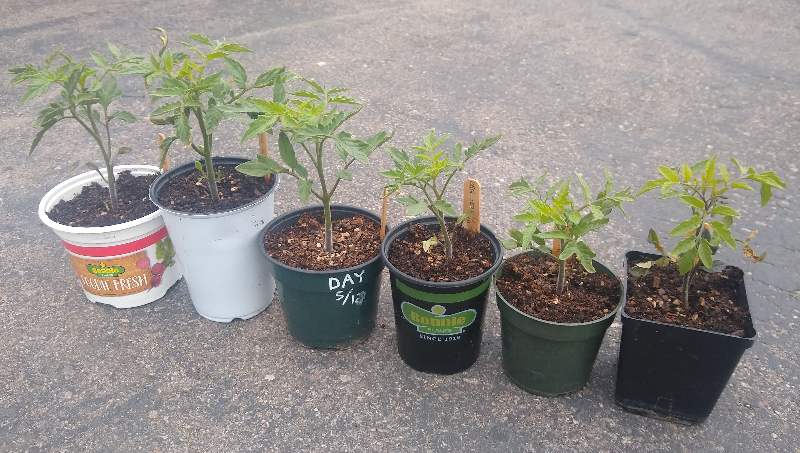


I’m confused – I’ve started all my tomato and other veggie seedlings in soil-less seed starting mix. But the ones you reviewed are all potting mixes. Am I missing something? Also – at what point do I pot up into potting mix once true leaves have started?
Hi Mariangela,
There’s little to no difference in most products labelled potting mixes compared to seed-starting mixes. And most of both contain no dirt. Of the three I used above, only Ocean Forest says it contains dirt (“sandy loam”), and whatever the quantity in there it was undetectable to me.
You don’t need dirt in a seed-starting (or potting) mix, but it doesn’t hurt to have some in there either — despite what some people say. Here are couple posts related to this:
https://gregalder.com/yardposts/adding-soil-and-compost-to-seed-starting-mixes/
https://gregalder.com/yardposts/can-you-start-vegetable-seeds-in-compost/
You can pot seedlings up anytime, but I like to wait until the seedlings’ roots have filled out the cell they’re in because then the rootballs don’t fall apart during transplanting. You can guess at this by looking at the drainage holes in the bottom to see if roots are poking out, or you can squeeze the cell walls and tug the seedling out to check.
Interesting-I always thought you had to use seed starter mixes designed for that specific purpose. Based on your article you can use potting soil to start seeds. By the way I do use 420 potting soil in my raised beds.
Yes, Jay. See my reply to Mariangela above.
Hello!
Did you say you used the 420 potting soil for your raised garden beds? How has it turned out? I was thinking of doing the same or using a local organic soil from a nursery.
I love it! God made me a “why” man so that question is up front in my mind at all times. Your experiment answers some “whys” for me. I began back in the 1990’s with a Gwen avocado tree. It has been a wonderful addition to my tract home lot. But those heat spells, and the ground squirrels greatly increasing in number have been problems. I now have a sprinkler mounted to cover my Gwen for those hot times. Now I have planted 8 more various ‘cado trees, in hopes of both year around and getting my share despite the ground squirrels. I was raised in LaHabra, CA and remember the avocado packing house on its main street. Calavo, wasn’t it? Thank you for the informative blog.
Thanks for this, David. I think God made me a “why” man too.
One hypothesis might be that some forest product components were insufficiently “aged,” a subjective term. Sawdust is known to be an intense nitrogen sink. Ingredients by weight suggest the worm castings component is more of a condiment than a main course. 🙂
Great ideas, both. Thank you for pointing them out, Randy. (A bag of worm castings is HEAVY.)
Great site! Hands down, my kitchen scrap compost is best for starts. I thought if the volunteers were so strong in my compost, why not try it indoors. It’s all I use. Malibu Compost Seed Starting Mix is great too.
I’m gonna try the compost after reading this. We have chickens and haven’t done the traditional spin tub compost method for years. I built a 4×8 foot box on the ground away from the house and simply toss the kitchen trimmings and some garden trimmings in it daily. The chickens know the sounds and come running when new stuff is added. I’ve only dug into it once to pull compost out and that was several years ago. Im guessing the stuff in there is pretty good so will break out the screen to sift it this weekend.
We just filled our first raised bed with Recipe 420. A lot of soul searching went into paying for it, but in the end I wanted to ensure we had a good start. The local nursery had a sign near their raised bed saying they use it in theirs.
I’ve still been trying to find a less expensive option for future beds (EB Stone has a raised bed blend available in 3 cu foot bales) and wonder if it makes much of a difference if you amend it with something like BioTone or Recipe 420’s Recharge? I actually called EB Stone to ask questions about Recipe 420, and their expert said it has enough nutrients to feed for about 8 weeks, then needs Recharge or Ultra Bloom (depending on if you’re still wanting to push growth, or ready to push flowering). Once that initial 8 week feeding is up, I wonder if it really makes a difference compared to something else with bark, pumice and peat?
Hi James,
I can’t speak to long-term use of Recipe 420 in a permanent bed or container, but I currently have three tomato plants that I sowed back in January in Recipe 420 and have potted them up into larger pots filled with more R. 420 each time. They now have some fruit on them and are growing as well as any tomatoes I’ve ever grown. Maybe I’ll keep one going in a pot of R. 420 through the summer just to see what happens compared to my tomatoes in the ground.
As for R. 420 compared to filling the beds with something like bark, pumice, and peat, I would guess there wouldn’t be much of a difference in the long run. Those are almost the same as the primary ingredients of R. 420.
We have used 420 for many years, I agree it is definitely very good. It has been getting more and more expensive, so we have limited it’s use towards potting up stages. For starting have been using peat plugs just because they are less messy, but they aren’t cheap either.
Last couple of years we have been making our own potting soil with 1/3 coco coir, 1/3 peat moss and 1/3 perlite, and various other adds, depending on what is on hand. Seems like it works pretty well. Somewhat inspired by Gary’s videos from Laguna Hills Nursery, that the best long term medium is closer to pure sand than anything else. with the organic layers on top generating the nutrients that percolate down into the root zone.
Thanks for sharing this experience, Colin.